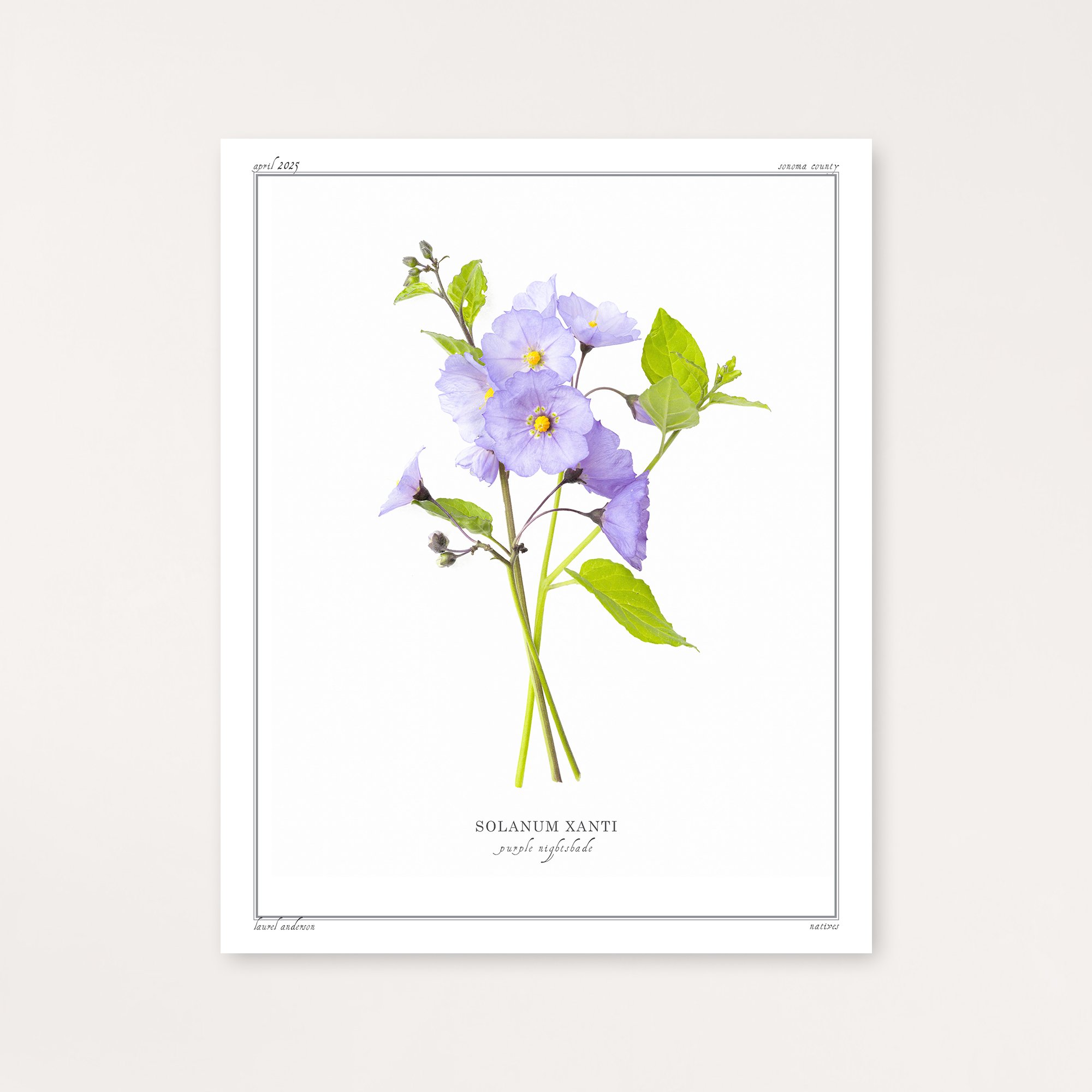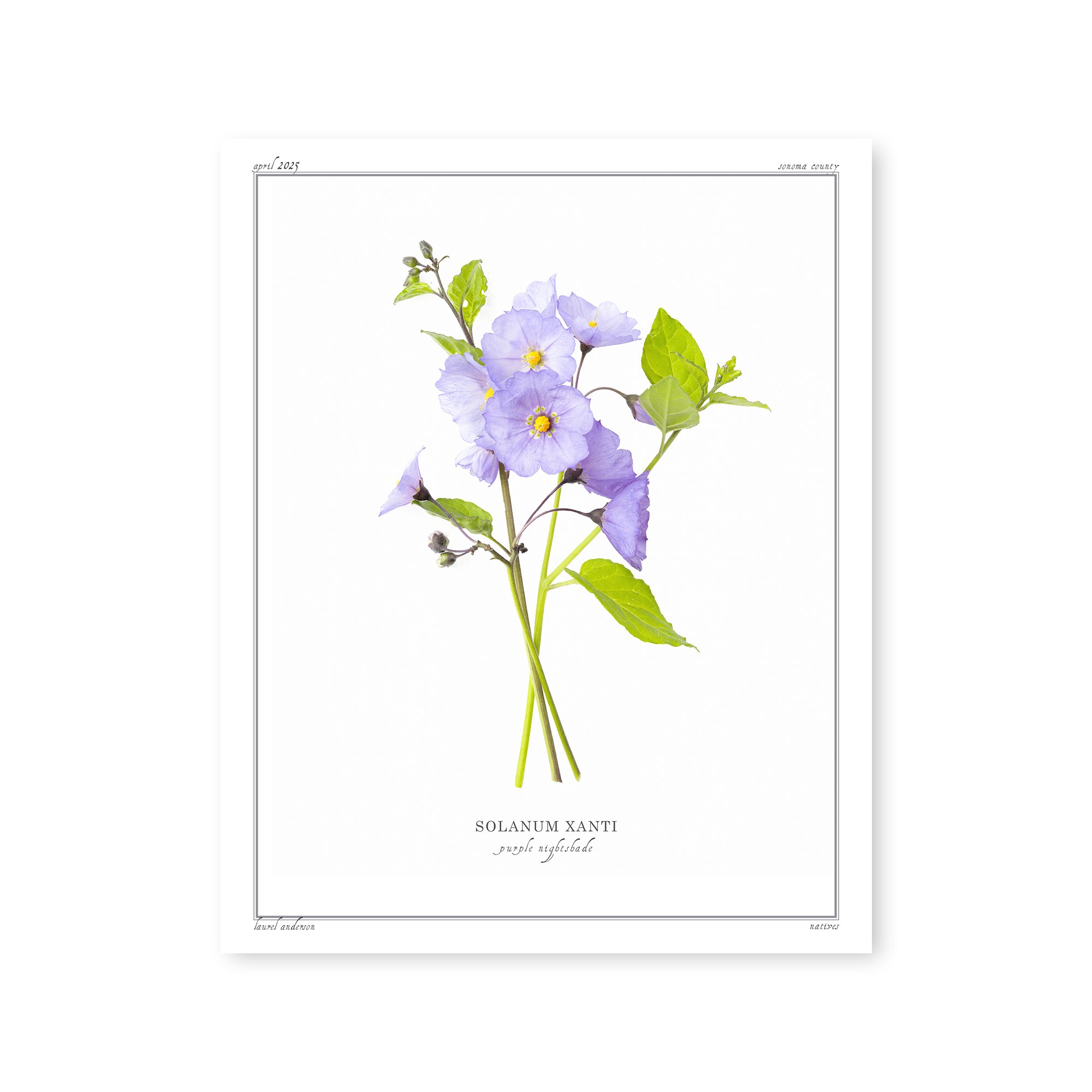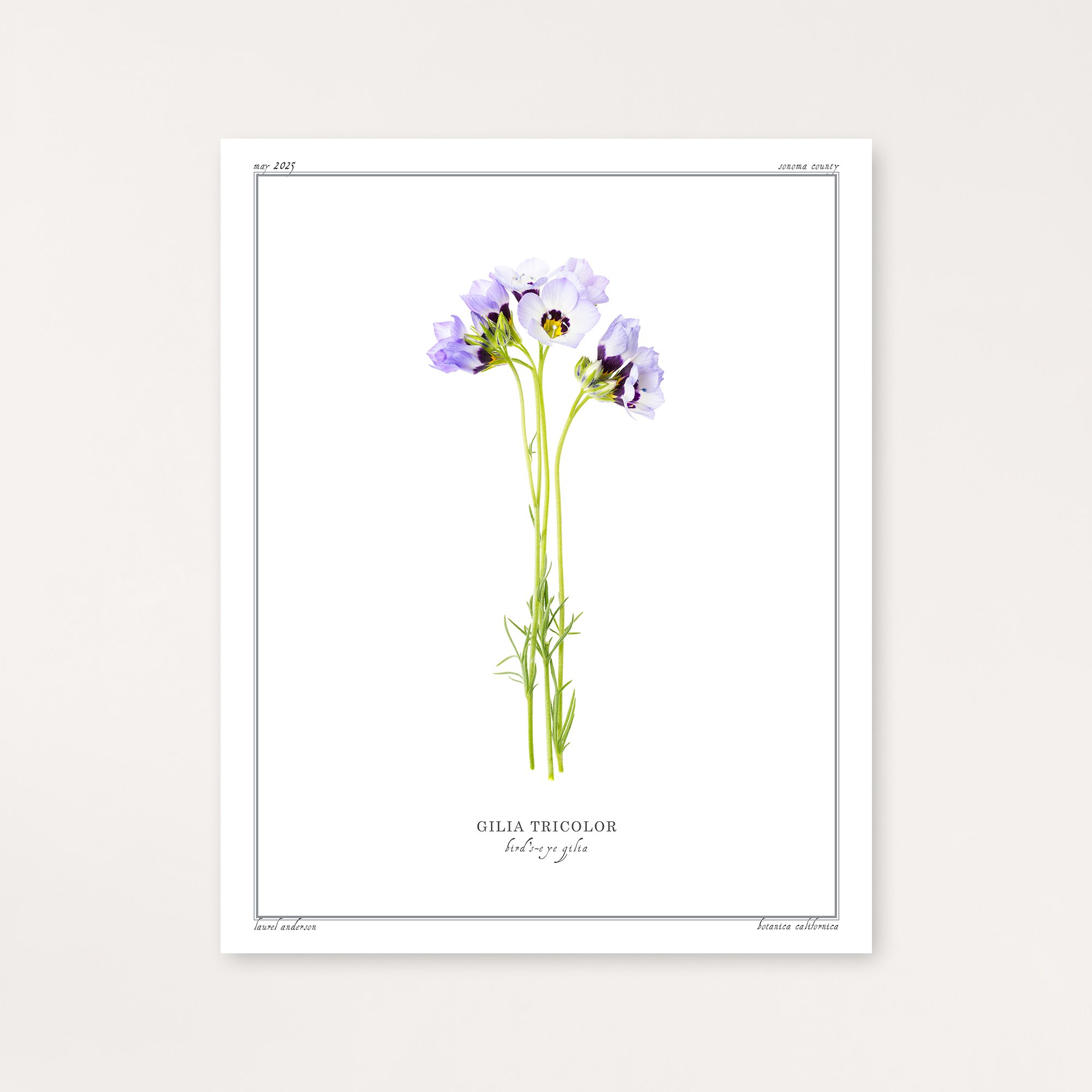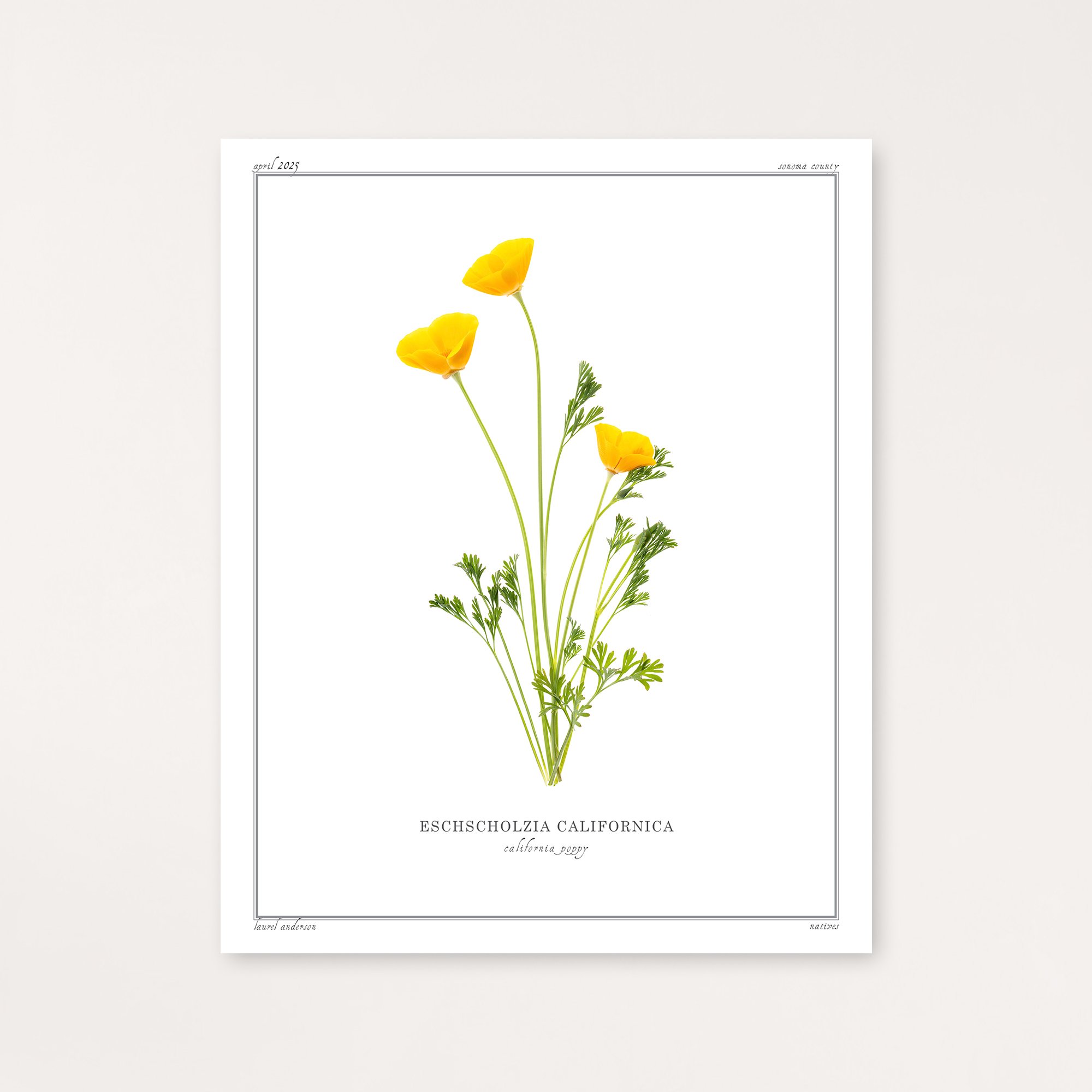 Image 1 of 2
Image 1 of 2

 Image 2 of 2
Image 2 of 2



Western Houndstongue
Western Houndstongue, Adelinia grandis (formerly Cynoglossum grande), has large, tongue-shaped basal leaves that emerge in winter, followed by stalks of brilliant blue flowers with distinctive white centers. Its particular shade of blue is one of my favorite colors.
This early spring bloomer provides crucial nectar for native bees and butterflies when few other plants are flowering, with small periwinkle to lavender flowers that change color to guide pollinators. The immature pink blooms signal "not ready" to visiting bees, while mature blue flowers indicate prime nectar availability, and fading blue-purple petals communicate "pollination complete." Additionally, this plant serves as a larval host for wild forget-me-not moths (Gnophaela latipennis) and crambid snout moths (Udea itysalis), supporting specialized butterfly and moth populations.
Indigenous peoples across western North America utilized this versatile plant both medicinally and nutritionally. Native tribes grated the roots to create dressings for treating inflamed burns and scalds, and prepared root preparations to address stomach aches and venereal diseases. The roots were also cooked and eaten as food. Some tribes called this plant 'coyote ears,' referring to the distinctive shape of its broad, tongue-like leaves.
Each print is made by the artist using archival quality pigment ink on Moab's Entrada Rag Bright 300 paper.
Western Houndstongue, Adelinia grandis (formerly Cynoglossum grande), has large, tongue-shaped basal leaves that emerge in winter, followed by stalks of brilliant blue flowers with distinctive white centers. Its particular shade of blue is one of my favorite colors.
This early spring bloomer provides crucial nectar for native bees and butterflies when few other plants are flowering, with small periwinkle to lavender flowers that change color to guide pollinators. The immature pink blooms signal "not ready" to visiting bees, while mature blue flowers indicate prime nectar availability, and fading blue-purple petals communicate "pollination complete." Additionally, this plant serves as a larval host for wild forget-me-not moths (Gnophaela latipennis) and crambid snout moths (Udea itysalis), supporting specialized butterfly and moth populations.
Indigenous peoples across western North America utilized this versatile plant both medicinally and nutritionally. Native tribes grated the roots to create dressings for treating inflamed burns and scalds, and prepared root preparations to address stomach aches and venereal diseases. The roots were also cooked and eaten as food. Some tribes called this plant 'coyote ears,' referring to the distinctive shape of its broad, tongue-like leaves.
Each print is made by the artist using archival quality pigment ink on Moab's Entrada Rag Bright 300 paper.



















